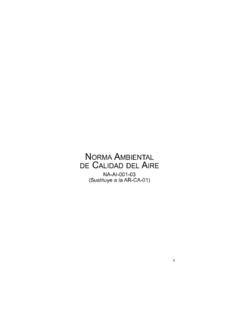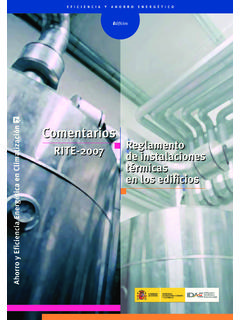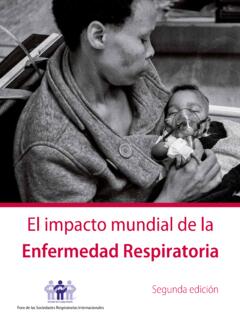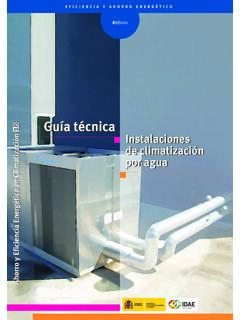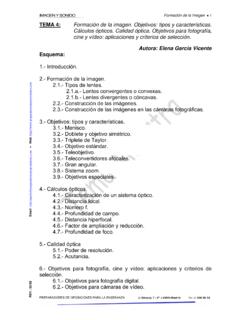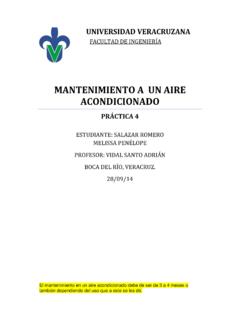Transcription of Air Quality Index - A Guide to Air Quality and ... - AirNow
1 A Guide to Air Quality and Your HealthRecycled/recyclable. Printed with vegetable oil-based inks on 100% postconsumer process, chlorine-free recycled Environmental Protection AgencyOffice of Air Quality Planning and StandardsOutreach and Information DivisionResearch Triangle Park, NCFebruary 2014 EPA-456/F-14-002 Local air Quality is very unhealthy today. It s a code red day for ozone. Particle pollution levels are forecast to be unhealthy for sensitive groups. You may hear these alerts on radio or TV or read them in the newspaper. But what do they mean if you: Are active outdoors? Have children who play outdoors? Are an older adult? Have heart or lung disease?This booklet will help you understand how to find out about air Quality in your area and protect your Quality IndexWhy is air Quality important?Local air Quality affects how you live and breathe.
2 Like the weather, it can change from day to day or even hour to hour. The Environmental Protection Agency (EPA) and your local air Quality agency have been working to make information about outdoor air Quality as easy to find and understand as weather forecasts. A key tool in this effort is the Air Quality Index , or AQI. EPA and local offi-cials use the AQI to provide simple information about your local air Quality , how unhealthy air may affect you, and how you can protect your is the AQI? The AQI is an Index for reporting daily air Quality . It tells you how clean or unhealthy your air is, and what associ-ated health effects might be a concern. The AQI focuses on health effects you may experience within a few hours or days after breathing unhealthy air. The AQI is calculated for four major air pollutants regulated by the Clean Air Act: ground-level ozone, particle pollution, carbon monoxide, and sulfur dioxide.
3 For each of these pollutants, EPA has established national air Quality standards to protect public is currently reviewing the national air Quality standard for nitrogen dioxide. If the standard is revised, the AQI will be revised as well. Air Quality directly affects our Quality of does the AQI work? Think of the AQI as a yardstick that runs from 0 to 500. The higher the AQI value, the greater the level of air pol-lution and the greater the health concern. For example, an AQI value of 50 represents good air Quality with little or no potential to affect public health, while an AQI value over 300 represents air Quality so hazardous that everyone may experience serious effects. An AQI value of 100 generally corresponds to the national air Quality standard for the pollutant, which is the level EPA has set to protect public health. AQI values at or below 100 are generally thought of as satisfactory.
4 When AQI values are above 100, air Quality is considered to be unhealthy at first for certain sensitive groups of people, then for everyone as AQI values do the AQI values mean?The purpose of the AQI is to help you understand what local air Quality means to your health. To make it easier to under-stand, the AQI is divided into six levels of health concern:Air Quality Index (AQI) ValuesLevels of Health ConcernColorsWhen the AQI is in this range:..air Quality conditions are:..as symbolized by this color:0 to 50 GoodGreen51 to 100 ModerateYellow101 to 150 Unhealthy for Sensitive GroupsOrange151 to 200 UnhealthyRed201 to 300 Very UnhealthyPurple301 to 500 HazardousMaroon2 Air Quality IndexEach category corresponds to a different level of health concern: Good. The AQI value for your community is between 0 and 50. Air Quality is satisfactory and poses little or no health risk.
5 Moderate. The AQI is between 51 and 100. Air Quality is acceptable; however, pollution in this range may pose a moderate health concern for a very small number of indi-viduals. People who are unusually sensitive to ozone or particle pollution may experience respiratory symptoms. Unhealthy for Sensitive Groups. When AQI values are between 101 and 150, members of sensitive groups may experience health effects, but the general public is unlikely to be affected. Ozone: People with lung disease, children, older adults, and people who are active outdoors are considered sensitive and therefore at greater risk. Particle pollution: People with heart or lung disease, older adults,1 and children are considered sensitive and therefore at greater risk. Unhealthy. Everyone may begin to experience health effects when AQI values are between 151 and 200. Members of sensitive groups may experience more serious health effects.
6 Very Unhealthy. AQI values between 201 and 300 trigger a health alert, meaning everyone may experience more serious health effects. Hazardous. AQI values over 300 trigger health warnings of emergency conditions. The entire population is even more likely to be affected by serious health effects. How is a community s AQI calculated and reported? Each day, monitors record concentrations of the major pol-lutants at more than a thousand locations across the country. 1 Due to the normal aging process, older adults may experience increased health risks from exposure to unhealthy air. Studies indicate that some people become more sensitive in their mid-60s. However, the risk of heart attacks, and thus the risk from particle pollution, may begin as early as the mid-40s for men and mid-50s for raw measurements are converted into a separate AQI value for each pollutant (ground-level ozone, particle pollu-tion, carbon monoxide, and sulfur dioxide) using standard formulas developed by EPA.
7 The highest of these AQI values is reported as the AQI value for that large cities (more than 350,000 people), state and local agencies are required to report the AQI to the public daily. Many smaller communities also report the AQI as a public health the AQI is above 100, agencies must also report which groups, such as children or people with asthma or heart disease, may be sensitive to that pollutant. If two or more pollutants have AQI values above 100 on a given day, agencies must report all the groups that are sensitive to those pollutants. For example, if a community s AQI is 130 for ozone and 101 for particle pollution, the AQI value for that day would be announced as 130 for ozone. The announce-ments would note that particle pollution levels were also high and would alert groups sensitive to ozone or particle pollution about how to protect their cities also provide forecasts for the next day s AQI.
8 These forecasts help local residents protect their health by alerting them to plan their strenuous outdoor activities for a time when air Quality is For more information on how the AQI is calculated, see Technical Assistance Document for the Reporting of Daily Air Quality the Air Quality Index (AQI) in the Publications section of active outdoors can be sensitive to air pollutants. 3 Air Quality IndexThe AQI is a national Index , so the values and colors used to show local air Quality and the levels of health concern are the same everywhere in the United States. Where can I find the AQI? Checking local air Quality is as easy as checking the weather. You can find the latest AQI values on the Internet, in your local media, and on many state and local telephone hotlines. You can also sign up to receive AQI forecasts by e-mail: AQI on the Internet. EPA and its federal, tribal, state, and local partners have developed an AirNow Web site to provide the public with easy access to national air Quality information.
9 At , you will find daily AQI forecasts and real-time AQI conditions for over 300 cities across the United States, with links to more detailed state and local air Quality Web sites. AirNow s reports are displayed as maps you can use to quickly determine if the air Quality is unhealthy near you. AQI via e-mail. Sign up for EnviroFlash ( ), a free service that will alert you via e-mail when air Quality is forecast to be a concern in your of a national AQI map available on the AirNow Web site. AQI in the media. Many local media television, radio, and newspapers and some national media (such as USA Today, The Weather Channel, and CNN) provide daily air Quality reports, often as part of the weather forecast. Here s the type of report you might hear: What are typical AQI values in most communities? In many communities, AQI values are usually below 100, with higher values occurring just a few times a year.
10 Larger cities typically have more air pollution than smaller cities, so their AQI values may exceed 100 more often. AQI values higher than 200 are infrequent, and AQI values above 300 are extremely rare they generally occur only during events such as forest fires. You can compare the air Quality of cities and find out about Quality trends in your area by visiting Air Compare at AQI values can vary from one season to another. In winter, carbon monoxide may be high in some areas because cold weather makes it difficult for car emission control systems to operate effectively. Ozone is often higher in warmer months, because heat and sunlight increase ozone formation. Particle pollution can be elevated any time of the values also can vary depending on the time of day. Ozone levels often peak in the afternoon to early evening. Carbon monoxide may be a problem during morning or evening rush hours.

